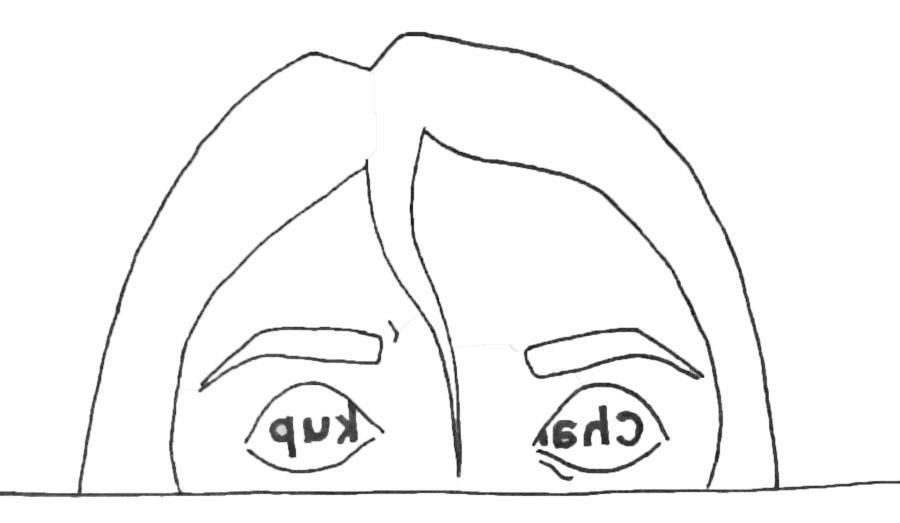Are your laptop habits affecting your health?
It’s 11pm on a Thursday night. The blue glow of the screen reflects off my sun-deprived skin. I sit hunched over my keyboard, furiously typing away at my English essay. My neck goes stiff. My toes fall asleep. My eyes glaze over. Every weeknight, Urban students are in the exact same predicament, slaving away at their computers. Yet what is the consequence of this seemingly innocent daily activity? From Computer Vision Syndrome to insomnia, the hours Urban students spend online are taking their toll.
Eyesight is one of the most obvious concerns regarding extensive computer use. One issue is the act of staring at a small area for an extended period of time. According to a survey out to the Urban community, 14 percent of students and teachers who completed the survey reported experiencing Computer Vision Syndrome, which is strain on eyes caused by staring at a screen. These symptoms include eyestrain, headaches, blurred vision, and dry eyes, according to the American Optometric Association (AOA). AOA reports that “Vision problems experienced by computer operators are generally only temporary and will decline after stopping computer work at the end of the day … If nothing is done to address the cause of the problems, they will continue to recur and perhaps worsen with future computer use.” (American Optometric Association, 1997).
CPMC Psychiatrist Mary Burke MD says, “There’s a lot of eye strain, and people complaining of visual problems because of the high intensity of gazing at these fairly small objects in middle range.”
The other primary concern regarding the eyes and computer use is the exposure to blue light. As published by the American Board of Opticianry in 2015, “Biologically, blue light contributes to feelings of alertness and well-being” when introduced in the small natural quantities from the sun’s rays. However, over-exposure to blue light, which is caused by the prevalence of electronic devices, leads to poor visual acuity, increased risk for age-related macular degeneration, and negative consequences to health (Pesca, American Board of Opticianry, 2015).
Dr. Laurel Schultz, a San Francisco Pediatrician, says, “Screens have been shown to interfere with our ability to fall asleep at our normal sleep times. And of course not getting enough sleep has always been an issue with teens, and [screen time] is just compounding the problem. Lack of sleep has been associated with a myriad of health problems and can negatively impact learning and memory formation.”
Musculoskeletal problems, such as back and neck pain and carpal tunnel syndrome go along with extensive computer use. “Mid-thoracic back pain… I am seeing more of this in otherwise healthy young people. Also I see lots of people walking around with their necks straining forward” said Dr. Schultz. As for Carpal tunnel, Schultz said, “Surprisingly I see very little of this [in young patients.] I see it most in the parents.” Burke connects these symptoms not simply to being on the computer, but to the stillness that goes along with it: “When people are on computers, they tend to get kind of hypnotized and sit very still. They don’t notice when they are getting uncomfortable.” In the previously mentioned survey, 36 percent of Urban students and teachers reported back pain or other musculoskeletal issues related to computer use.
The neurological and mental health effect of the laptop is another huge concern. Schultz said, “I think that the laptop/internet can be one big ADHD producing device.” In fact, the percentage of those seeking treatment for ADHD has risen significantly in the past 15 years, according to the CDC’s Morbidity and Mortality Weekly Report (MMRW).
Urban’s technology department head, Stacie Muñoz, said that “Because we are so inundated with notifications on our computer . . . It puts us in this mindset of constantly expecting something to be happening . . . I feel like it’s really messing with our ability to just sit down and focus on the task at hand.”
There are several ways to limit the damaging effect of screen time. “Make bedtime a priority over downtime with non-homework related internet content,” Schultz suggested to decrease the effect of blue light on your sleep cycle. If you need to look at the computer, follow the 20-20-20 rule: “every 20 minutes look at something in the distance (at least 20 feet away) for 20 seconds or more” to prevent eye strain. Set a timer, or use a chrome extension like EyeCare to remind you.
On avoiding blue light, Burke said, “Getting a blue light filter for your computer, or even if you can stand it, wearing amber colored glasses can help.”
Taking a break from screen time is crucial: “even if you are super focused for those 25 minutes, you should take a break,” Muñoz says. Turning off notifications on your laptop may help with focus. So Urban students, do not fret. While we do spend hours toiling at the keyboards, implementing these simple techniques will help soothe our headaches, ease our eyes, and to give our backs a well-earned break.


